Deciding to get a German Shepherd brings an important choice: should you opt for a working line or a show line? While you might simply desire a German Shepherd, recognizing the difference between working line and show line German Shepherds is crucial for making the right decision.
Working line German Shepherds are characterized by their high energy, stamina, and strong desire to please and protect. In contrast, show line German Shepherds, bred for aesthetics, generally have lower energy and are easier to manage, but they may face more complex health issues.
This blog post aims to delve into the distinct characteristics, temperaments, and needs of each line, helping you determine which type aligns best with your lifestyle and expectations.
Whether you’re looking for a loyal companion, a show dog, or a working partner, this guide will provide you with the insights needed to decide which German Shepherd line is the perfect fit for you.
Let’s dive in!
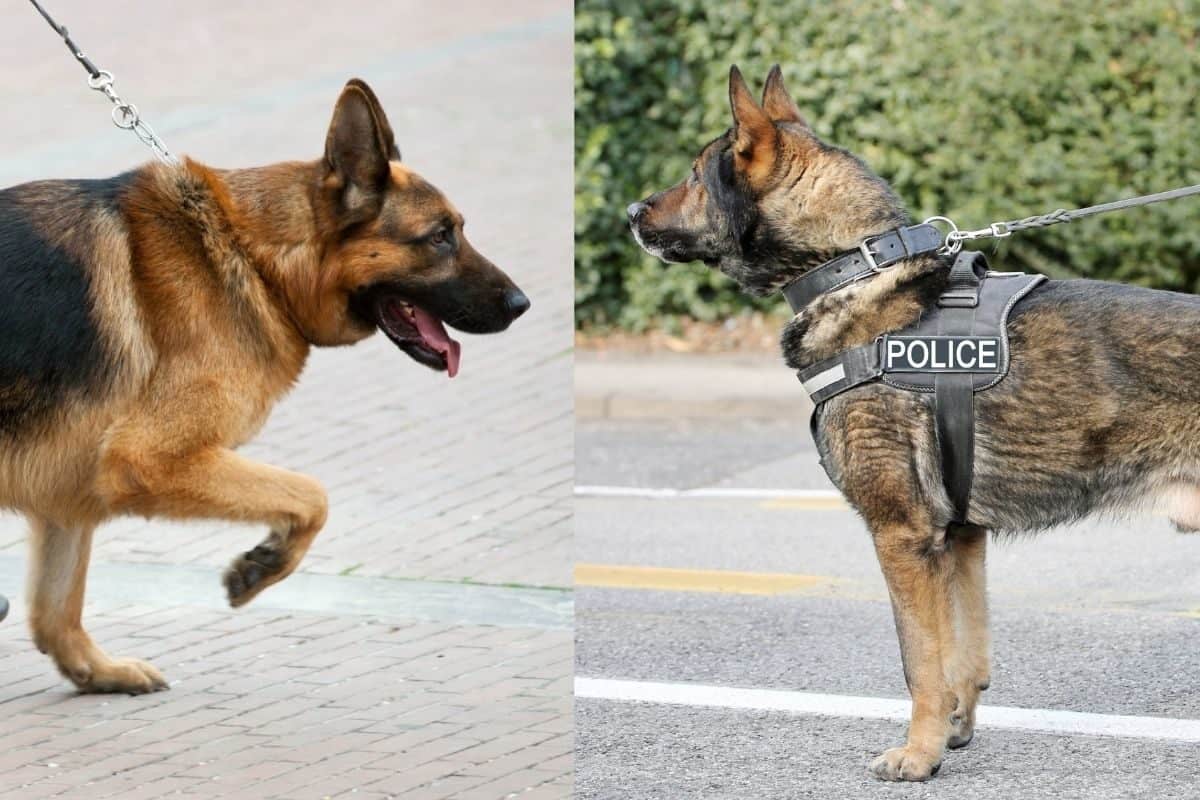
Difference Between Working Line and Show Line German Shepherds
| Trait | Working Line GSD | Show Line GSD |
|---|---|---|
| Appearance | Straighter topline, athletic, muscular, wolf-like | Sloped back, more angulated, bulkier size |
| Type | Working / Companion | Showing / Companion |
| Temperament | High-energy, Protective, Guard-dog, Brave, Loyal, Highly-bonded, Intelligent, Confident, Aloof, Versatile, Alert | Slightly less energetic, Affectionate, Less clingy, Intelligent, Confident, Independent, Aloof, Protective, Loyal |
| Health | Improved health (hip and elbow dysplasia is rare) | Hip and elbow dysplasia, other joint issues |
| Coat Type (Length) | Short-medium, Medium | Medium, Long |
| Coat Color | Black sable, black & tan, solid black | Rich dark colors; black and red, black and tan, all black |
| Cost | $1500+ | $2000 – $2500 |
Working Line GSD: A Brief Overview
Working line German Shepherds are bred for work and have an aesthetic and sometimes intimidating appearance. They possess a strong work ethic, enhanced physical capabilities, better limb-length consistency due to less hind angulation, and improved health.
They can be distinguished from show line German Shepherds by their physique and athleticism. These dogs come in 11 registered coat colors (black and tan, black sable, and solid black being more prominent) and a wolf-like posture.
The history of show dogs, in general, goes back to the 1850s when breeds were being standardized in Germany. Breeders at that time had a significant bone of contention: whether dogs should be bred based on appearance or their working capabilities.
Max von Stephanitz, a German army captain and former veterinary science student, advocated for standardized breeding of working dogs and dedicated 35 years of his life to developing a breed with excellent herding capabilities.
He was inspired by a dog, Hektor Linksrhein’s (known as Horand von Grafrath) qualities and abilities in a dog show. Von Stephanitz purchased the dog, and Horand von Grafrath was considered the first German Shepherd.
The breeding of these working Shepherds was greatly improved by Stephanitz’s formulation of methodical breeding programs. Specific GSD working lines like the East/DDR Working Line GSD, West German Working Line GSD, and the Czech Shepherd emerged throughout the 1900s, adding to their working pedigree.
Working line German Shepherds have an athletic and muscular body with a straight back and less angulated hips that assist them in their duties.
They also have erect, pointy ears. They are trained to perform under pressure and have the mindset to desire work.
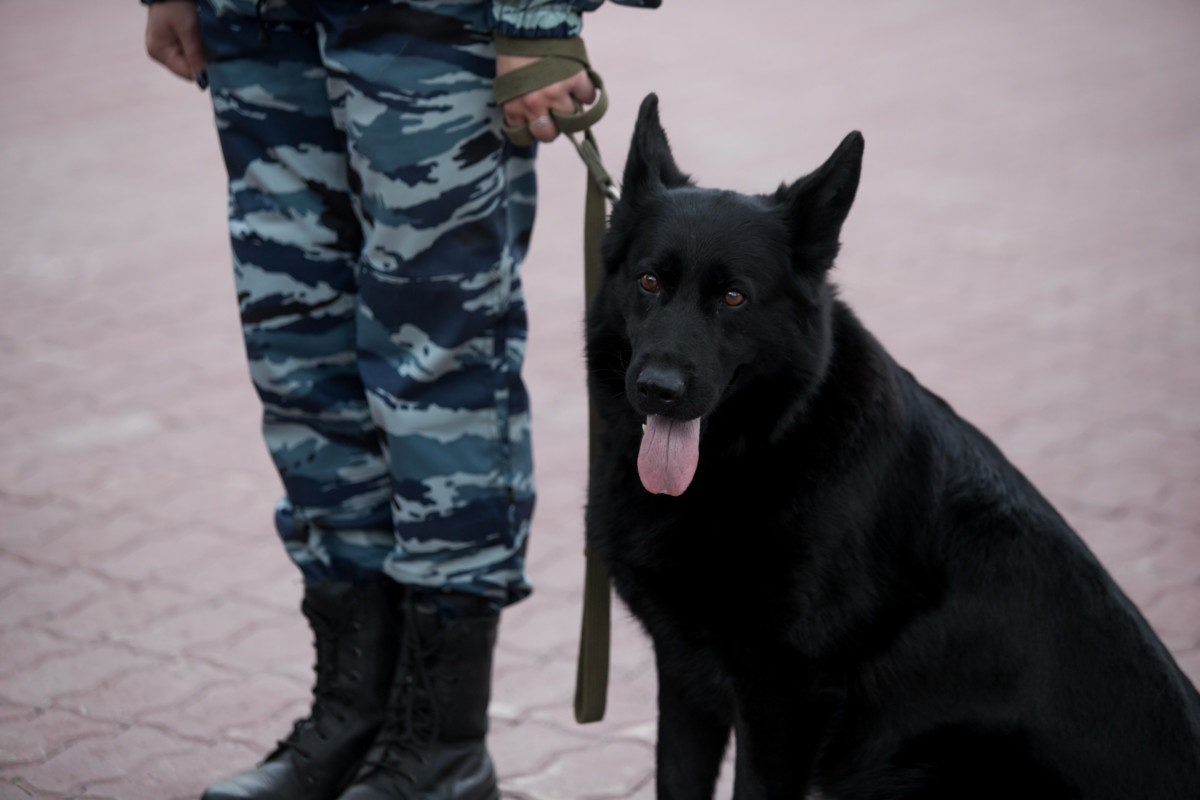
They also have a higher pain endurance and work tolerance and can work even in extreme weather conditions. Working-line German Shepherds have enhanced drives of prey, defense, and fight.
They are great for police work, military, search and rescue, drug and bomb detection, arson or human detection, personal protection, patrolling, guarding, serving disabled people, therapy, guidance, carrying messages, and, of course, herding.
German Shepherds’ versatility amazed me. In one shift, I saw their detection skills finding drugs in a house search, then assisting with crowd control and safety at a large sporting event a few hours later.
Working line GSDs are usually 24-26 inches in height for males and 22-24 inches for females. Male dogs weigh around 66-88 pounds, and females weigh between 49-71 pounds. Their life span is about 10-13 years, but they are less prone to diseases than other types and are generally healthier.
Health-wise, working line German Shepherds rarely suffer from hip dysplasia but are prone to bloat (GDV) and pancreatitis.
They are brave, vigilant dogs with incredible loyalty, intelligence, independence, versatility, and energy. Additionally, they are innately territorial as well and are pretty protective.
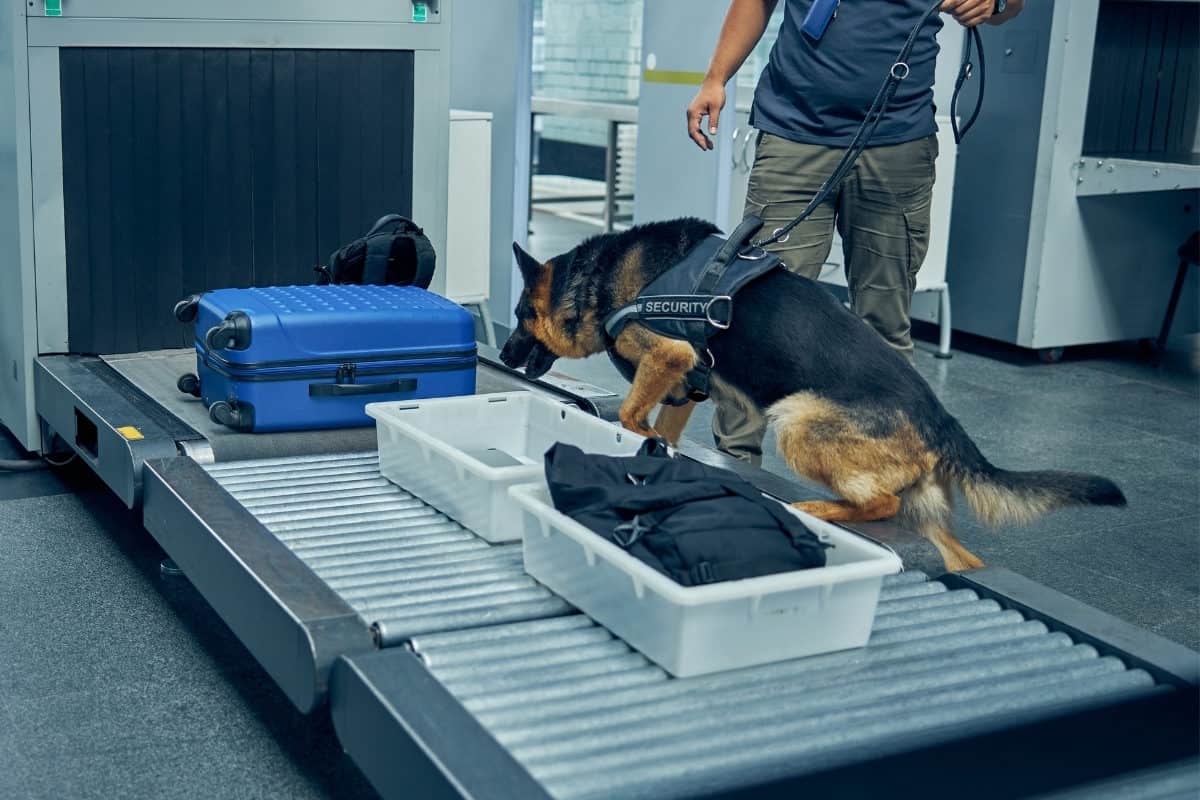
Working line GSDs are high-energy dogs with medium to high exercise needs. They also need to put their brain to work and require frequent mental stimulation, which owes to their intelligence. Since they are highly trainable, you can efficiently ease them into a routine.
Like other types, working line GSDs have a double coat and shed all year round. They have fewer grooming needs than show line German Shepherds, but you must care for their ears, teeth, and nails. Although they may look a little intimidating, these dogs are great with children and other pets.
Working line GSDs typically cost anywhere between $1,500 – $4,000 (top end), depending on their bloodline.
Pros
Great as Working Dogs
Working line German Shepherds are some of the most versatile working dogs in the canine world and are widely known for their working capabilities. Although they were developed for herding, they can do much more.
Given their role in the police, military, and assisted services, they are great at chasing criminals, working as guard dogs, helping blind people, cheering up the sick, guarding property, leading, and even taking up movie roles.
Incredibly Loyal and Well-Behaved
Working line German Shepherds are very well-balanced, behaved, and committed dogs. They have the least temperamental issues because they are bred and trained to withstand pressure and deal with unfamiliar circumstances.
They are also very protective and loyal and make excellent family pets, but they can be aggressive if they need to be. Not only are they compassionate without being needy, but they are also fit and willing to serve as both guardians and companions.
Although a dog’s behavior and temperament usually depend on bloodlines/genetics, they tend to be friendly to their owners and can appear intimidating to strangers.
Wide-Scale Information Available for Help
The German Shepherd is one of the most sought-after breeds globally. The American Kennel Club ranked them as the fourth most registered breed in 2022, and because of their popularity, a wide range of resources are available for help and information.
Any questions related to your German Shepherd’s health, eating habits, temperament, or exercise can be quickly answered by various communities available via online forums, social media groups, or other websites like this one. Just use the search function on this website to find what you’re looking for.
Cons
Time Investment
Working line German Shepherds are quite a handful to train and maintain. Moreover, excessive time and effort demands do not end with their physical and mental stimulation.
From health to socialization to training and diet, their needs are as diverse as a human. This can be good or bad, depending on how much time you can invest.
Being There for Them as a Leader
Spending time with your working line GSD is not enough; you must establish yourself as an approachable but commanding leader for proper training. This way, you can keep your dog within his boundaries and make sure he trains adequately.
A working line GSD may not be the right fit for you if you are uncomfortable being firm and commanding. These dogs can also suffer from separation anxiety and should not be left alone for long periods.
Large Size and Energy
Working line GSDs are large dogs and require ample living space. Their height and weight do not make them suitable for apartments and small living spaces or people with a sedentary lifestyle. Although not hyperactive, they need a daily discharge of energy to prevent behavior issues and becoming destructive.
Show Line German Shepherd: A Brief Overview

Show line German Shepherds are a German Shepherd variety bred mainly for showing. They are beautiful and are not specialized to work. Since GSDs usually require a lot of care, time, and attention for their upbringing, the show lines were initially developed as a reaction to these extensive requirements.
Breeders in Europe bred them for owners without the patience, time, and energy to deal with working line types. They are also known as “High Lines” or “Sieger Lines” and are considered the easier-to-raise version of the German Shepherd varieties.
Show line German Shepherds are usually darker in color, as judges prefer rich-colored dogs in show rings. The American Kennel Club considers dilute colors, such as blue and liver, serious faults, so they do not make good show dogs.
White German Shepherds and those without a predominantly back nose are prohibited in show rings. You can read more about German Shepherd colors and patterns here, 21 German Shepherd Coat Colors.
Many owners choose a show line dog but have no intention of entering competitions. My German Shepherd is a European show line (as opposed to the American one), and I chose her for her temperament, color, and looks.
The show bloodlines also have triangular and erect ears and a broad head with powerfully angled hindquarters. They are good-tempered dogs, make excellent family pets, and you can even train them as guard dogs. They are also highly intelligent and easily trainable but require authority guidance.
Since they are raised differently than working GSDs, show line German Shepherds have a lower energy drive but require physical and mental stimulation, albeit comparatively lower. They also have extensive grooming requirements to ensure refined showing qualities.
Showline German Shepherds are generally thinner-boned dogs with large bodies. They have the appearance of shorter back legs and long front ones due to refined hip angulation, which makes their back sloped or slanting.
The American show line is known for having an even more defined angulation and sloped top line than their West German Shepherd counterparts.
However, there is a lot of controversy around this trait, as neither is a sloped back a breeding requirement according to the American Kennel Club nor a trait passed down by original GSD generations.
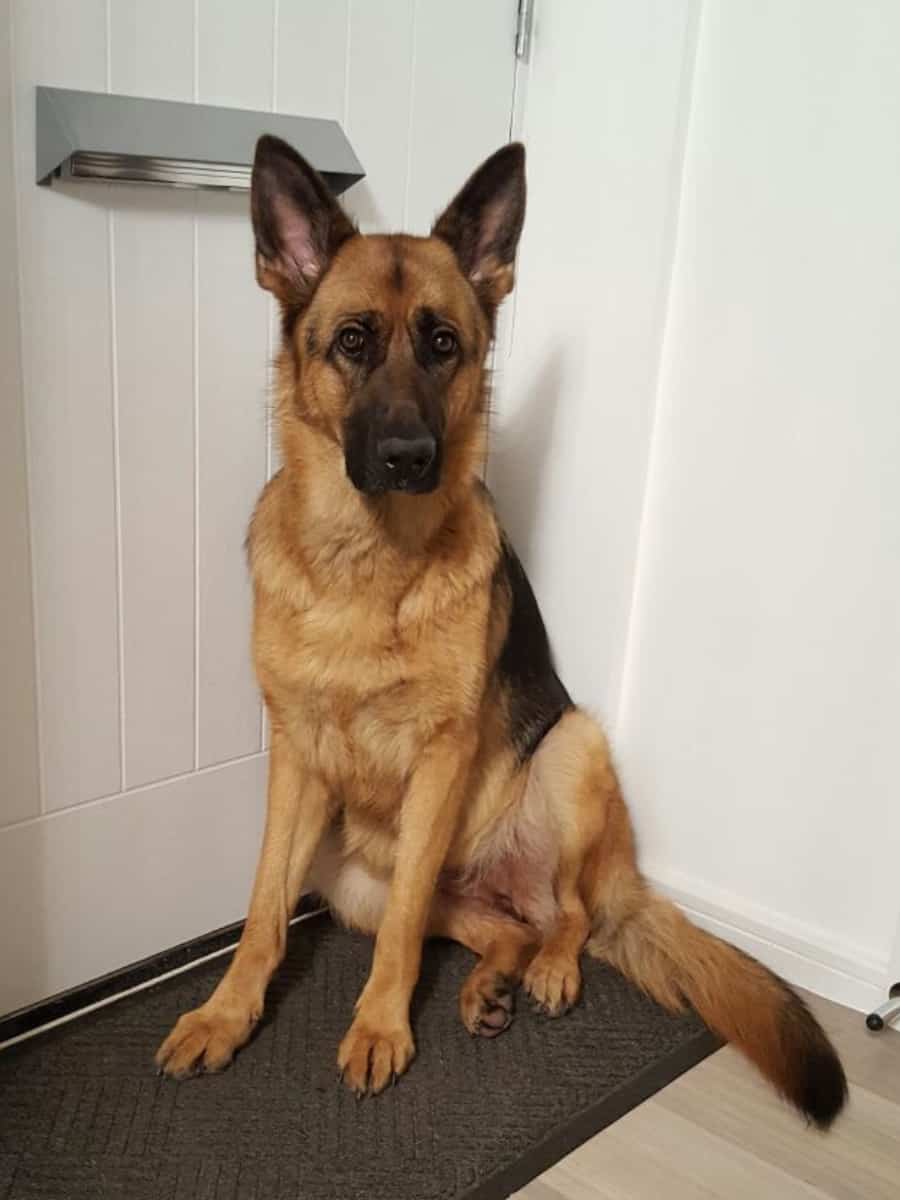
Most experts and researchers believe this trait was promoted by a specific group of breeders, also known as “breed authorities,” simply because several sloped back show line GSDs won showing competitions. This trait was intentionally bred to imitate the physique of those winning dogs.
A survey conducted by the Royal Veterinary College showed the cruel orthopedic problems caused by these exaggerated breed standards. Since a curved back causes the dog’s hips and knees to come closer to the ground, the hindquarters become more angulated and cause substantial wear and tear.
Without appearing too biased, breeders and winners of show lines will say their German Shepherds are perfectly healthy.
Showline GSDs can be registered in America if their parents are registered with the American Kennel Club. There are also no standard temperament, health, or obedience requirements for breeding, but that is not true in European countries.
Therefore, getting a dog from Germany or another European country ensures the probability of good temperament, health, and obedience. Show lines are prone to developing health conditions such as hip and elbow dysplasia, arthritis, bloat, and allergies.
Show line German Shepherds are pretty expensive and usually cost around $2,000 – $2,500. The price naturally increases if the dog possesses certain show line traits or is unique in color, and you could pay more than $4,000 for a dog of this caliber.
Like every type of GSD, show line German Shepherds have certain benefits and drawbacks. So before you adopt a dog for its beauty, you better know your duty.
Pros
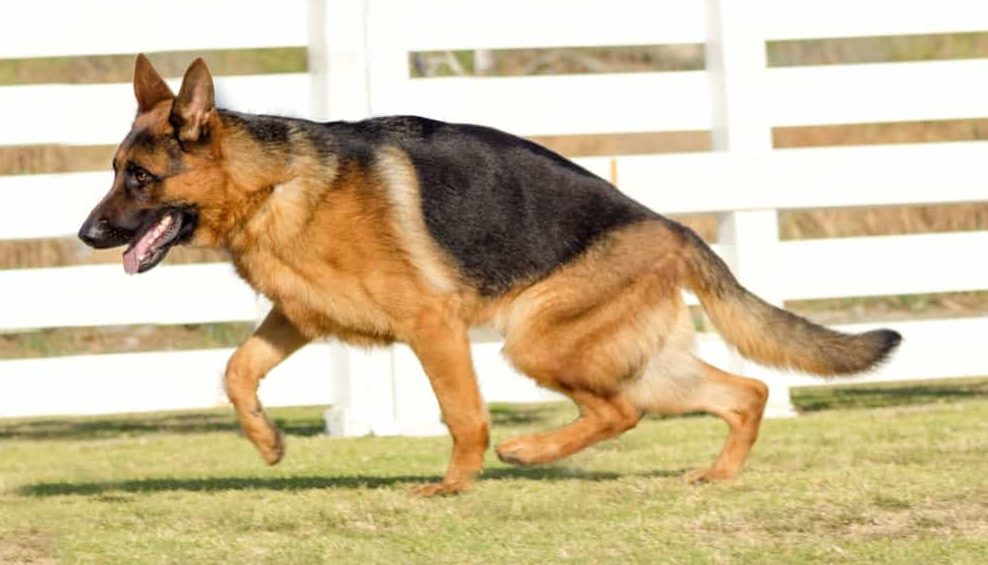
Visually Appealing Dogs
Show line German Shepherds are bred with a substantial focus on their looks. They are beautiful and aesthetically pleasing with their rich and dark colors. However, just because they are not working does not mean they are weak or frail-looking.
They are tall, broad-chested, sturdy, and imposing figures with chiseled heads and well-formed features. Their hindquarters are in proportion to the rest of their body. Good show line Shepherds look a little intimidating and scary, even somewhat aloof.
Well Balanced Temperament
Showline German Shepherds are very calm and well-balanced with an easy-going temperament. They are also highly protective of their owners due to their past as herding dogs. The show lines are affectionate and loving dogs and develop strong bonds of trust with their owners.
Even though they are skeptical of strangers, they usually do not resort to violence and use intimidation techniques when they feel threatened.
The American Kennel Club declares the ideal show line German Shepherd to be “regal in temperament, a dog with a noble bearing, fearless and self-confident.”
Good for Both Showing and Guarding
You can quickly train a show line German Shepherd for show ring qualities using specific strategies and reward-based techniques.
If you are interested in showing your dog, you can put some effort into his grooming and training for him to win competitions. If not, you can take them in as family pets.
They are great with children and other dogs and are pretty affectionate without being clingy. These dogs can also make excellent guard dogs if socialized and trained correctly.
Cons
Prone to Genetic Health Concerns
Since there is a lack of qualifying requirements and standard health evaluations, show line GSDs are prone to several health concerns stemming from their genetics.
The primary focus lies on their physical appearance, which sometimes comes at the cost of their health, such as sloped backs. Hip and elbow dysplasia, bloating, and arthritis are the most common complications.
Exceptional Grooming Requirements
Although all dogs have specific hygiene and grooming requirements, show line GSDs have certain additional ones to maintain their striking physical appearance. Their heavy coats require frequent brushing and grooming to ensure their shine and volume.
Since they are the models in the canine world, their nails, ears, teeth, and skin care need better attention.
Financial Burden
Show line German Shepherds are expensive not only to acquire but also to maintain. Their grooming, food, and exercise requirements mean you must be ready to commit time and money.
However, since one person’s expense is another’s investment, you cannot universally judge whether getting a GSD is a good or bad fiscal choice. You need to know you’ll spend more time and money than expected.
Working Line vs. Show Line GSDs
Difference in Purpose and Training
Working line GSDs are bred and trained for work, usually in law enforcement or the military. Because of this, they are subjected to training processes that conform to the work standards of these agencies.
Their endurance is enhanced via training, as is their pain tolerance, survival rate, and work efficiency. On the other hand, show line German Shepherds are bred and raised for show rings. They are not trained to have the same abilities as a working line Shepherd; they are trained to fulfill the requirements of dog competition.
They specialize in being well-structured and visually appealing, which is not the focus for working bloodlines.
Physical Appearance
Working Line German Shepherds are athletic dogs with a straight back and less hip angulation. These traits allow them to work efficiently for long periods without harming their health. Show line German Shepherds have sloped backs and, thus, shorter hind legs, making them suitable for showing.
Working line Shepherds do not have extensive standards and usually only prefer a medium-length double coat for climate tolerance. That is not the case for show line GSDs, which must be of rich and dark colors like black, black and red, black and tan, or black and silver.
Temperamental Difference
Working line GSDs are more alert and sensitive to moving people or animals. They are also more aggressive and are prone to biting or attacking when faced with a threat. This is a direct result of their training, including specific exercises for developing physical strength, intelligence, and tolerance.
Show line German Shepherds are, in contrast, calmer, more tamed, and home-friendly dogs. They usually resort to intimidation instead of violence and only attack when they need to defend themselves.
FAQs
Are working line dogs more difficult to train than show lines?
Working line German Shepherds are generally considered more trainable than show line German Shepherds due to their high work drive, focus, and natural instinct to follow commands. However, both types can be trained successfully with proper training techniques and consistency.
Can working line German Shepherds also participate in dog shows?
Yes, working line German Shepherds can participate in dog shows, but they are typically not as successful as show lines due to their different physical and temperament characteristics. The working lines are bred for their working abilities rather than their appearance, which is the main focus of dog competition.
Are show line varieties more suitable as family pets?
While both working and show line German Shepherds can make excellent family pets, there are some key differences to consider. Working line dogs are bred for their athleticism, drive, and intelligence, making them well-suited for roles such as police or military work, search and rescue operations, and competitive sports like obedience or agility.
Show line German Shepherds often have a less intense drive and energy level compared to working line dogs. Additionally, their temperament is typically calmer and more easygoing, making them better suited for a family pet or companion
Which type of German Shepherd is more intelligent?
The answer to this question depends on many factors, including the individual dog’s genetics, environment, and training. Generally speaking, the most intelligent type of German Shepherd is the show line. Show line German Shepherds are bred to conform to the breed standard, which means they have a very specific look and temperament.
Final Thoughts – Choosing the Right Bloodline
You can choose which German Shepherd is the right fit for you by matching your personality with theirs.
Both types have specific differences in personality, purpose, and physical attributes but are equally excellent family dogs and are very loving and devoted. Both of them come with their fair share of responsibilities, and thus you should only take one if you can ensure their safety and proper upbringing.
If you want to learn more about the 5 different types of German Shepherds, check out the below video:
Related Posts You May Like:





